#comics movies books etc etc etc i love variants i love seeing what different covers or posters capture about a thing
Text
variant cover art my beloved
#i mean this in literally every way btw#comics movies books etc etc etc i love variants i love seeing what different covers or posters capture about a thing#that one dceased horror variant cover w/ harley quinn and the supersons haunts me#the pacrim alt poster with the jaeger kneeling down to people on the beach#heir of sea and fire german variant cover#while making that venn diagram i found a couple of SUPER cool variant posters for arrival and tenet#like OUGH VARIANT ART. YES.#Lu rambles
9 notes
·
View notes
Photo


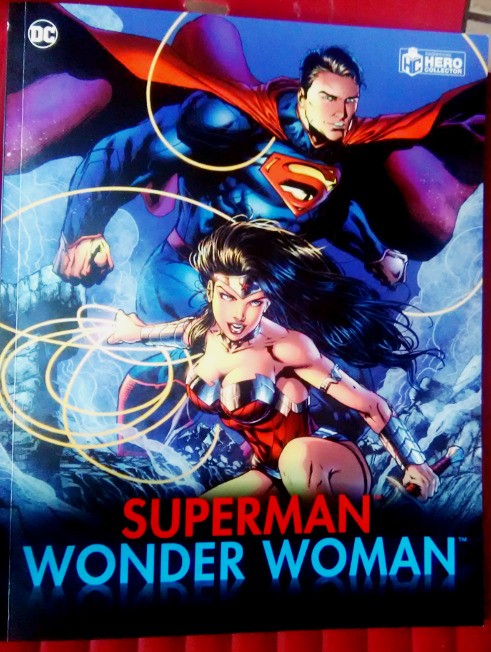
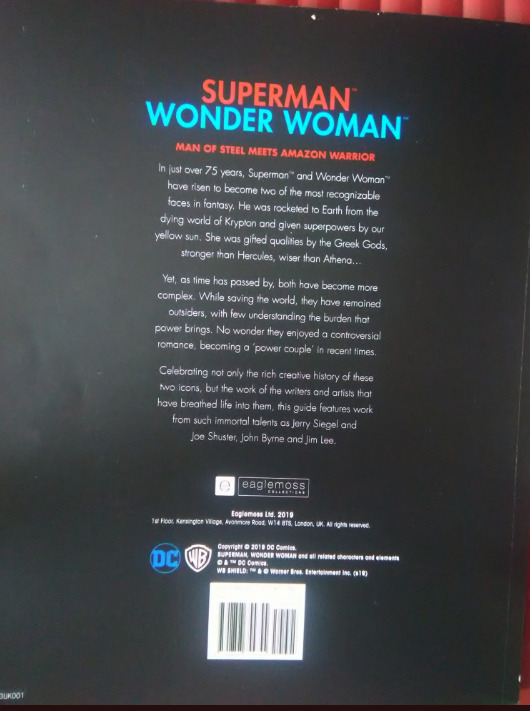
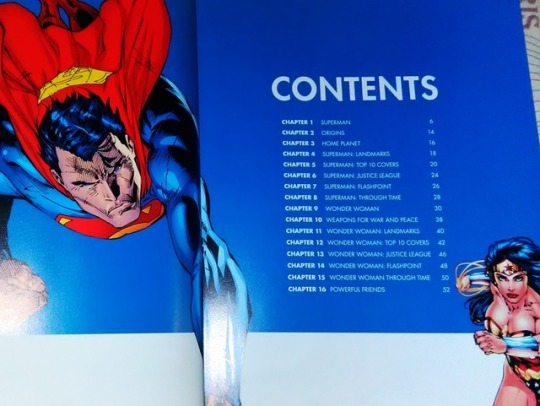
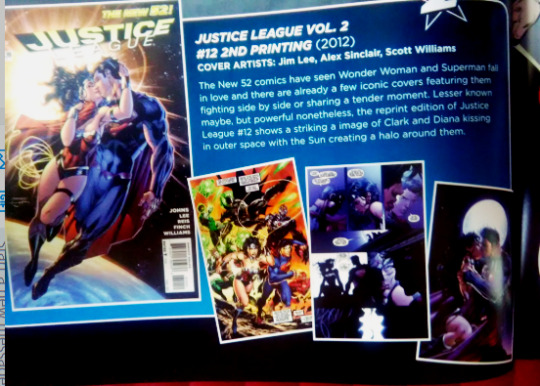
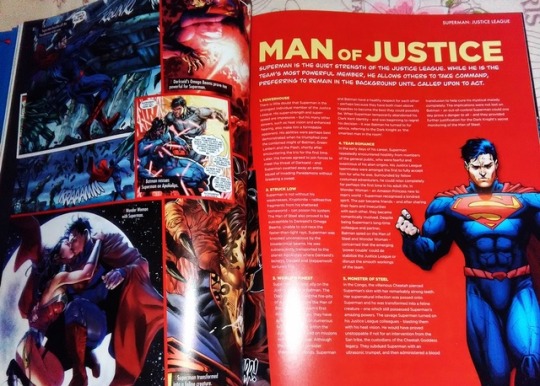

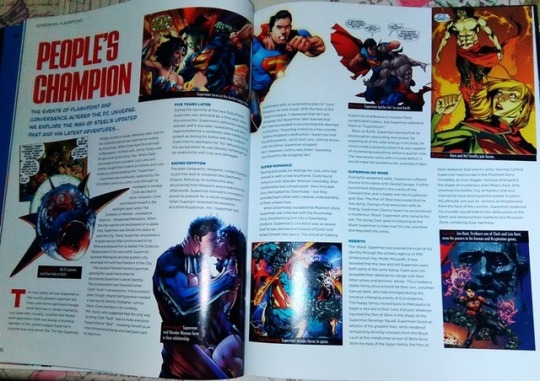
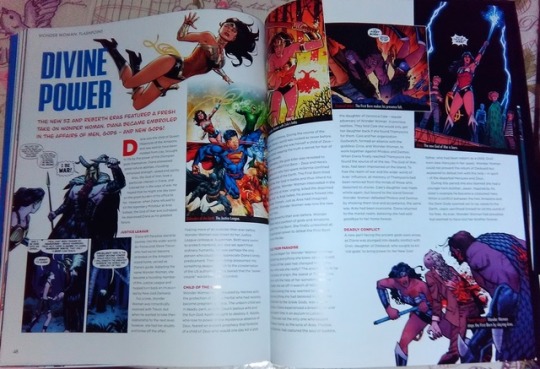
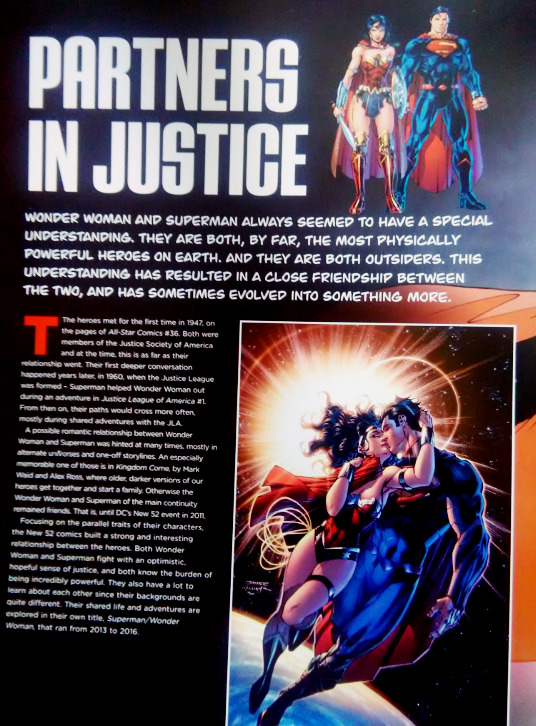
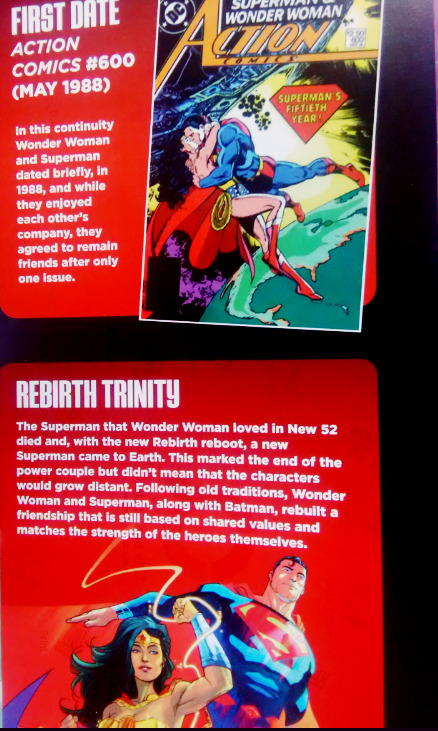
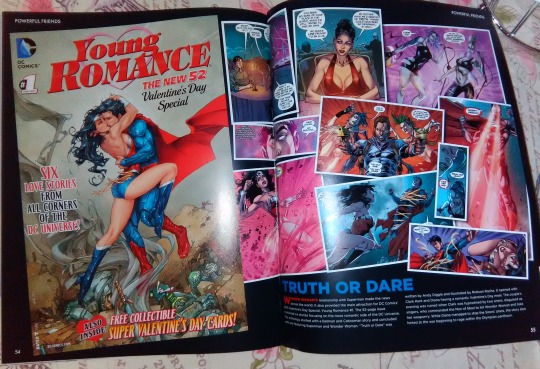
Okay so just decided to share some of the pages from the Superman and Wonder Woman Plus Collectibles and give my own little review. The book itself comes with two figures. So it is part of the package, a sort of backup to two collectibles to inform even the most casual or new fan about Superman and Wonder Woman’s history.
The collectibles themselves are fine for what they are. Personally I would have preferred New 52 or Classic uniforms ie red trunks and star spangled bottoms. I especially do not care for the Reborn Superman suit because it looks like a onesie. I do not care if Superman has trunks or not but he really needs red boots. So this is a bias of mine I fully acknowledge. I might throw a lick of paint on his boots. Wonder Woman, eh this is her look all over now so she at least feels kind of just up to date as opposed to Rebirth onesie Superman.
The book itself, while I would have liked a hardcover, is 67 pages. The quality of the paper and print is very good. It has a nice high sheen and bright colors. The cover is a gorgeous print of Jason Fabok’s Superman and Wonder Woman The Ultimate Power Couple Justice League variant from the new 52. As a fan of the new 52 couple this was nice to see.
The book is clearly an amalgam of other books DC probably has written on Superman and Wonder Woman in order to try to give the reader an idea about the two heroes and their history apart and together. It has that feel that it is not one voice or era speaking. And this is evidenced by the different writers ie, James Hill , James Andrews, Neal Bailey , Jake Black and Matthew Manning. It, however, does a fairly good job trying to simplify the very convoluted history of DC from Action Comics #1 to Rebirth era. It presents timelines, different eras, milestones, iconic covers, origins, foes, love interests, events, character background etc and so forth on the two heroes. If you are not a staunch follower of DC this is fine. If you read comics and know your stuff then you might wonder where is a particular story or certain cover? But I get it. They needed to try to consolidate decades of history in a limited pages on two heroes who collectively have been around since 1938 and 1941. Diana is also called the First Lady of Superheroes, and is seen as Superman’s equal and a feminist icon since her inception.
Now one wonders with the Superman and Wonder Woman guides out there why there is even a need to do this. Some of this stuff surely could have been slotted in those books in a couple of pages but it seems that this book is some sort of effort to present them as a partnership, even if they have separate franchises.I am surprised they did this given the way they carry on about Batman/Superman as a duo. Batman has a book with him and the Joker btw in the same Superhero Collector series. But then they are of the same franchise so it was a pleasant surprise to see them put Superman and Wonder Woman together.
They mention the Clark and Diana romance, dedicate pages to showing images and more or less seems to be trying to say, whether romance or close friends, they have a significant connection that is there and has always been there. The preface on the back cover also supports this and the page dedicated to them Partners in Justice. They mention their date back in Action 600 and even tried to suggest they stayed close in Rebirth. This is ironic because we know this to not be not exactly true. DC writers currently have been keeping Superman away from Wonder Woman, there is not the closeness of preflashpoint. They close of with a double splash page of Rocafort’s Young Romance cover and panels from that Truth or Dare story as well. I only wished they had included more of Charles Soule’s and Tony S Daniel’s Power Couple series Superman/Wonder Woman and Ross/Waid’s Kingdom Come. But then I guess this means people can go look for those stories and read them as they are mentioned.
The mere fact this book exists I would say is a good thing. At least to inform new and non fans. It’s a nice gift for a loved one or younger reader who are SMWW fans or who want to know more. It also is an affirmation that Superman and Wonder Woman have shared history and are a significant partnership in the DCU. Now if only current DC writers, tv writers and movie writers can remember that.
80 notes
·
View notes
Text
Ghost-Spider #1 Thoughts
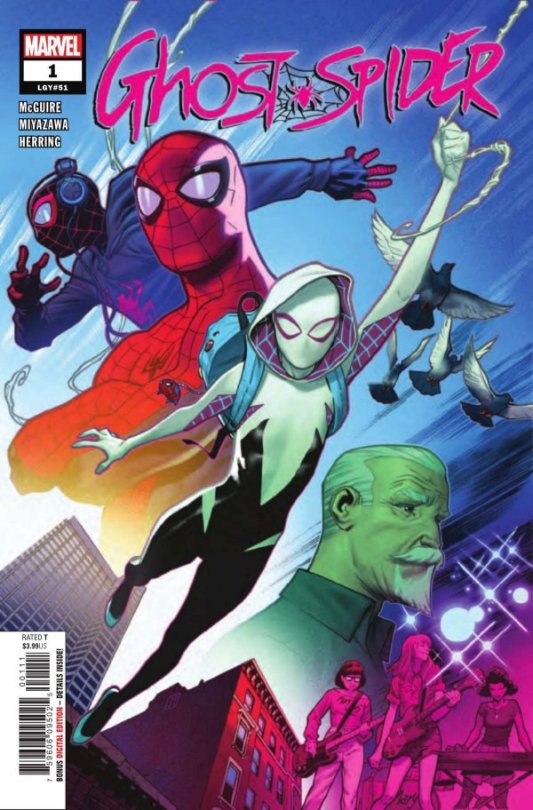
Since I enjoyed the Spider-Geddon aftermath issue of Ghost Spider and because seeing Spider-Gwen meet Earth 616 Jackal intrigued me I decided to check out the current story arc and...um...oh dear...
So confession. I dropped Spider-Gwen’s title after reading the issue that debuted Earth 65 Kraven. The moment I saw him with his stupid Hipster look I was like ‘Noooooooooooooooope’.
So consequently I missed out on such gems as Gwenom and other great ideas I’m sure were inspired by variant covers.
What I’m saying is I’m out of the loop and therefore any analysis I might be able to provide isn’t going to be that great because I’m literally lacking in information.
That all being said I also maintain what Stan the Man said once upon a time, every comic is someone’s first. That goes for issue #1s moreso than others!
So we come to this title.
Was it good.
From where I’m standing...no not really.
Okay so first of all the art is lovely, it really is. And the scene where George’s surprise party goes very wrong was really well paced out by the art, which sold the comedy very well!
As for other positives...um...the story remembered to address the fact that Gwen can’t just show up to Earth 616 and go to school there. The idea that Iron Man established a scholarship for extra terrestrial and extra terrestrial people fixes that problem...but it opens up a boatload of questions.
Is Gwen and fellow students from other dimensions like her stealing student places from people based in Earth 616?
Wouldn’t education standards vary wildly across dimensions? After all a lot of times when it comes to education it’s less how well you did as much as where you went (or sadly who you know). I mean I know people from my university, which was no slouch, who got great grades but were passed over for jobs by people with less impressive grades but from more prestigious universities. Is a grade from Oxford or Yale on Earth 616 worth as much on the job market as it is on Earth 65? It may well be that on Earth 65 (which we know has a different history to Earth 616 and isn’t necessarily a reflection of OUR real life world) ESU is regarded as a lesser school that’s easy to pass.
Wouldn’t the subject of allowing aliens and other dimensional people to attend schools on Earth 616 open up a HUGE political debate regarding immigration? Provided it was known to the government of course and it Tony was hiding it from them then isn’t that super unethical?
What about the potential for disease and illnesses that could be brought over from a dimension with a starkly different germ history to Earth 616?
Do Gwen’s fellow students get to know she’s a foreign student from another dimension?
Are such things REALLy so common place blasé in the 616 universe? Surely the norm is to acknowledge that aliens and such things exist but to suspend disbelief to allow life to go on as normal, but if people are just actually reacting realistically to something like this doesn’t that break down the verisimilitude of the Marvel universe?
If Gwen is attending school with the legal name of Gwen Stacy and LOOKS like Gwen Stacy wouldn’t that raise a shitton of problems for her because she looks JUST LIKE A DEAD WOMAN! I mean Gwen’s clone at least changed her name. Is ESU really not going to have records of that time one of their students was murdered on a bridge? Gwen’s death was public knowledge the Green Goblin boasted about it on TV and Ben Urich wrote a book on it!
All of which is academic because even if Gwen earns a college education on Earth 616...how is that going to help her in the long run?
Think about it, she might be taught skills and stuff that she could then use in any jobs she adopts. But having skills is sadly only half the battle when it comes to getting a job. Of equal or possibly greater value is having the PROOF you have those skills. Someone can be a brilliant self-taught nuclear engineer. But if they’ve not got a college diploma to prove it they aren’t getting a job.
How is a diploma from Earth 616 going to mean anything besides a piece of paper on Earth 65. There wouldn’t be any records proving she attended ESU and even if Gwen tells them that she earned the degree in another universe they’d only have her word for it, faking a piece of paper saying you graduated is easy! Even if they did believe her no one in authority on Earth 65 has the power to verify how legit or qualified Earth 616’s ESU is. It could be an online course for all they know. Not to mention do the residents of Earth 65 even know that travel between parallel universes is even a thing?
I’m sure a lot of 616 citizens are probably vaguely aware of that but on Earth 65 that isn’t necessarily the case because they’ve not had a long history of Skrull invasions!
It’s all just so contrived to just have Gwen situated in Earth 616 because that would boost her sales in theory.
Creatively it causes problems too.
Let’s put aside how it means subplots and supporting characters are going to have to be divided between two universes where their collision will be difficult if not impossible.
Let’s even put aside how being a public figure in Earth 65 whilst she spends a huge chunk of her time in another universe entirely puts Gwen’s Dad (who’s human and at risk from heart attacks) at HUGE risk!
What is really gained creatively from having Gwen on Earth 616 where she can interact with like 616 Peter, 616 MJ, 616 Miles?
Fanservice. Sure. I mean that’s why I’m reading this.
But creatively speaking it is just...impoverishing for everyone.
Let’s first look at this from the POV of the 616 residents.
Miles gets to potentially date Gwen more easily now. This is a bad thing. Miles is already too similar to Peter and whilst this dynamic might work in the animated movies (which are themselves an AU to the comics) in an ongoing Miles story having him literally dating a version of Spider-Man’s girlfriend is reductive. Not to mention it might be a bad idea to have him date a fellow super in general, it undermines his normalcy and relative normalcy is important to Spider-Heroes. In this case it wouldn’t even be dating a hero, it’d be dating a hero from another universe!
For Mary Jane it also undermines her normalcy too as well as undermining the weight of Gwen’s death in her life because a version of Gwen, is alive and well and capable of regularly interacting with her.
The same holds true but a thousand times more for Peter. Unless you quarantine off this series as ‘Spider-Gwen continuity’ any time Peter feels mournful over Gwen now is going to feel rather hollow because you know he is regularly chatty with Spider-Gwen and literally helped her get into the same school as him!
That’s another bad thing about the comic by the way. Isn’t being on record as helping an other dimensional version of his dead girlfriend going to seriously put the spotlight on Peter in a big way? Does he even have the clout to help her get into ESU given how he’s only recently returned there himself? And what was with the dialogue implying he works there? When did that happen? He attends school there but he’s not got a job there last I checked??????????????
Also...isn’t Peter like seriously waaaaaaaaaaaaaaaaay too chill about Gwen? Remember how in the 1970s Clone Saga (the story this comic actively references) he was seriously shaken up when Gwen’s clone appeared? Remember when he had varying degrees of similar reactions EVERY time one of Gwen’s clones showed up, including when Spider-Gwen was impersonating one of Gwen’s clones in Clone Conspiracy?
Now he’s face to face with a living breathing version of Gwen Stacy who is arguably more real than any of those clones and he’s all smiles and meh. He doesn’t even think about it in the other titles! Like dude if Spider-Man came face to face with a living Gwen Stacy that would dwell on his mind somewhat!
Now let’s consider this from Gwen’s POV.
What does she gain from interacting on Earth 616?
Well she gets to be comparatively more normal than on her own Earth where she is a celebrity. Okay cool...couldn’t you just get to the same ends by mindwiping her identity from people on Earth 65? I mean we already did this with Peter Parker why is the integrity of Spider-Gwen’s narrative more precious?
She gets to interact with Earth 616 Jackal...which is really more interesting from the Jackal’s POV because does she even know who the hell Miles Warren is? It doesn’t seem like it based on this issue. I mean that’s why I’m reading this arc right now. Because seeing Miles Warren react to a living Gwen Stacy is an interesting idea to me. But why move the main character in this direction to do something interesting with a villain. Not even one of her own villains either, another character’s villain. Oh but Earth 65 Jackal is also doing stuff. Why is he even evil in her universe she’s not dead? Was he in love with Peter in her universe?
This basically applies to every villain and supporting character Gwen could bump into on Earth 616. Norman, Harry, Jameson, Curt Connors, Jill Stacy, etc.
The most interesting characters she could interact with from her POV are Peter and Mary Jane. But with Mary Jane you have to think the mileage doesn’t go much further than “Wow you are much nicer than my Earth’s Em Jay (who’s name has apparently changed now) who’s a total diva b-word!”.
And with Peter...well this issue already basically dispelled the drama from that. She regards him as a older friend but not a peer, not her Peter and someone she can chat to and fight crime with sometimes. That’s it really. There was more emotion and drama derived from that Conway backup story where she met the Goblin Peter back in Spider-Verse.
Meanwhile her own supporting cast and villains are very much left in the lurch. I mean the Man-Wolf is getting released on her Earth and I’m just like ‘so what she’s not even there right now!”
And like Peter and Miles this torpedoes the idea of Gwen being relatively normal. Juggling normal life problems with superhero problems flies out of the window when you are commuting between dimensions, one of which you are famously dead and the other of which you are just famous.
What else is there to talk about.
So Gwen’s costume is apparently composed of spiders but is also a symbiote...um...weird. in fairness maybe that’s addressed in older issues.
What’s weirder was the random giant rat...what was that even about?????????????
The only other positive I have to say about this issue was that at least it wasn’t as pretentious and not as obnoxiously zany as Latour’s run.
Finally...what was up with that opening page saying Gwen got her powers a few months ago??????
You telling me Gwen got her powers in high school, became famous as Spider-Gwen, Peter got crazy and turned himself into a lizard before dying, Gwen changed her world view, a campaign to capture her happened, she went to college, THEN Spider-Verse happened, THEN everything in volume 1 happened, THEN everything in Secret Wars happened, THEN everything in volume 2, Clone Conspiracy and Web Warriors happened (including the Spider Women crossover), then everything in volume 3 including Spider-Geddon happened and all this shit happened...in under a year?
What the fuck was everyone on speed or something that’s ridiculous!
I’m gonna pick up the next few issues but if they’re more of the same I hope the Jackal story wraps up sooner rather than later.
#Ghost-Spider#Spider-Gwen#Gwen Stacy#Spider-Man#Peter Parker#George Stacy#Captain Stacy#Spider-Verse#Spider-Geddon#Em Jay#the jackal#jackal#Miles Warren#Mary Jane Watson#Mary Jane Watson Parker#mj watson#mjwatsonedit
32 notes
·
View notes
Text
How George C. Romero’s Heavy Metal Comics Keep Dad’s Zombie Legacy Alive
https://ift.tt/3t3XtXS
The name is Romero. George C. Romero. And in case you didn’t guess, George C. Romero is the son of the late, legendary George A. Romero, the pioneering filmmaker whose 1968 horror classic Night of the Living Dead changed the face of horror cinema forever. George A. Romero and his small independent film collective created the modern zombie mythology, which has occupied a vast swath of the horror genre from George A.’s own later masterpieces like Dawn of the Dead all the way to modern weekly nightmares in The Walking Dead.
Meanwhile George Cameron Romero — the elder George’s son from his first marriage — went into filmmaking himself out of college, then veered into advertising, commercials, and online brand marketing with his own agency, where he created more than 100 campaigns and commercials, launched a film production facility in his native Western Pennsylvania, and directed a handful of features. Now George C. has entered the realm of comic books (which his dad also dabbled in with titles like Empire of the Dead for Marvel) through a partnership with the long-running, legendary-in-its-own-right sci-fi and fantasy comics magazine, Heavy Metal.
Romero is writing two series at the moment: the first, Cold Dead War (see cover art above), is a standalone book about a World War II bomber crew who find themselves reanimated after a freak occurrence during the Battle of Midway. Meanwhile The Rise is being serialized in each issue of Heavy Metal and offers an intriguing and gripping alternate history of not just the 1960s, but the origins of the zombie apocalypse in Night of the Living Dead itself.
The first issue (of four) from Cold Dead War hit the stands late last month while the first chapter (of 13) of The Rise has premiered in the latest issue of Heavy Metal, which arrived this week. That gave us the opportunity to speak with George about working in comics, the inspiration for both stories, and keeping his father’s legacy alive.
Den of Geek: How did you get involved with Heavy Metal and end up writing these comics?
George C. Romero: I actually met Matt [Medney], the CEO of Heavy Metal, through the tech producer for some podcasts that I do. He reached out to a connection of his at Heavy Metal, and Matt reached back out to me. We started talking because we were actually in the middle of putting on something that we called Def-Con 1, which is actually the first online fan convention. We did it like last year. The day that they announced that they were taking down all the conventions, I went on my show, and like two hours later announced that I was going to do one. I had no idea what I was doing.
Anyway, Matt and I met through that process and actually started talking about The Rise. Then from talking about that, and I think me going into detail with Matt a little bit about how The Rise was set in an alternate history from the ’60s, we started talking Cold Dead War. I think he just really liked where my head was at when it came to the alternate history and where I was going with The Rise. So we just started talking and he said, “What kind of story would you tell for Cold Dead War?” And I told him. He said, “Well, would you be interested in doing that?” I said, “Absolutely. Are you kidding me?” That’s how it started.
You’ve worked in film, you’ve worked in video, and you’ve worked in advertising. What makes comics different from these other mediums that you’ve worked in?
It’s interesting to think about it in those terms because I think, for me, coming from being a comic fan my whole life, not as hardcore as some hardcore comic fans, but a comic fan nonetheless, I always thought it was this wonderful kind of storytelling medium. Like you said, I’ve worked in a bunch of different mediums and different variants of this industry over my life. Getting into comics was always something that was appealing to me.
Then, on day one, I realized how terrifying it was, because here I was thinking that it was so limiting because I’m used to running around with a camera in my hand, in one way or another. So now I’m thinking there’s all these structure rules. There’s so many panels on a page, and you can push it to this many panels. You got to think about your paging this way. It was honestly kind of intimidating. At first I thought it was going to be very limiting.
It turns out that it has been, and continues to be, one of the most freeing creative experiences of my entire life, because where you start out thinking, “Well, you’ve got this limited number of panels, a limited number of pages,” what you don’t realize is that each one of those panels is like the construct from The Matrix. As opposed to when you’ve got a camera in your hand, you’re limited to the fact that you can only shoot, basically, something that’s real.
In the comics, each panel is like this giant construct. If you can think it, it can be drawn. And if it can be drawn, then it can be in a comic. It was just so creatively freeing. To work with people like Matt, who really encourages you to just be the purest version of your own creative self that you can be. To work with [editor] Joe Illedge and [publisher] Dave Erwin on this process, I couldn’t have asked for better people to mentor me into it.
(see an exclusive preview of The Rise chapter 3 — with art by Diego Yapur — below)
Heavy Metal
Did that freedom allow you to change the initial concepts in terms of their scope?
A good question. I don’t think it fundamentally changed my approach to the story or any of the foundations of either story, Cold Dead War, from the original concept, I think what it did was it allowed me to go to a level that no other medium I’ve ever worked in would’ve allowed me to go. So it actually allowed me to sort of really expand and blow out my thinking, as opposed to having to say, “I want to write a scene for this movie, and this scene is going to take place in a gigantic Gothic prison. Well, now I need to go find a gigantic Gothic prison for that.”
So what you end up doing when you do a movie, is you end up saying, “Well, that’s not really a practical thing for my budget level, so let me change that giant Gothic prison to some sort of holding cell.” You start scaling back. Whereas with comics, instead of hitting the brakes, you get to hit the gas at every step of the way. It didn’t change fundamentally anything; it just allowed me to really kind of pay attention to that foundation and that groundwork, and get a very comprehensive story out.
They always say film is the most collaborative art form because you have the director, you have the writer, the actors, and so on. Are comics similar in a sense, because you’re the writer, but you also have the artist, the inker, the person who does the lettering, the editor, etc.?
Correct. It is extremely collaborative. Working with Joe and Dave Erwin and Matt, and Heavy Metal in general, and Diego and everybody who’s touched all of these projects, it’s been a tremendously collaborative experience. I think there’s a balance though. While it is collaborative among the architects, it’s less collaborative when it comes to your characters. In film, the actors play such a huge part, or your cinematographer plays such a huge part in helping those actors become a character, or something like that. When it comes to graphic novels and the comics, you get to kind of puppet master all of that without question. So while it is collaborative, it’s sort of collaborative in an architectural level. That makes it really fun.
Read more
Movies
George A. Romero and the Meaning of His Zombies
By Ryan Lambie
Culture
What Are NFTs and Why Are Comics Companies Selling Them?
By Jim Dandy
With both these series, you’re going back into the past. What made World War II the right setting for Cold Dead War? And is that book less directly related than The Rise to the mythology that your dad created?
I think with Cold Dead War, it’s no big secret that Heavy Metal has sort of undead zombie content in that era and in that period. From a writer’s point-of-view, I love exploring different periods of history. I love taking stories and putting them in those periods. I think for Cold Dead War it was so fun because there weren’t any rules that I’m used to, or any rules to really play by, with regard to a lot of the zombie stuff. It was just absolute pure fiction. Rooting that in a real period of time was an interesting challenge, but it was one that was a lot of fun to do.
The Rise is more directly related to Night of the Living Dead, and also presents an alternate version of a very turbulent era in our history.
The ’60s are such a key point in American history and world history. It makes it a joy. It’s a wonderful decade to work in. I’ve done some stuff in the ’60s time period a few times over my life. It really makes it a joy because anything that you would want to talk about, you’ve got a perfect timeline against which to talk about it.
Is this also an alternate history or origin for Night of the Living Dead? Because your dad always left the starting point for that story perhaps intentionally vague.
There’s a reason that I don’t call it a prequel, because it’s not a prequel. It’s very much my own personal sort of prologue. It’s my personal story. You know, being in this business, being George’s son, there’s certain things people have always wanted of me, or I think expected of me, and one of those things at the top of the list has always been a zombie movie. I’m very much the type, just like my father was sort of the outlaw filmmaker, I’m very much the type that if you tell me to make a zombie movie, I will dig my heels in and say, “I’m not making a zombie movie.” At least that’s how I was while I was growing up.
That kind of led me to have this interesting perspective on everything. Not to mention a lot of the conversations and things that I was lucky enough to be around. I think I’ve got a unique enough perspective on the genre, on what my father and those guys did, that I think it’s a really fun story in terms of him leaving things intentionally vague. I have no choice, as his son, but to continue that vagueness. Whether or not I personally believe that he left it that vague is another story. There are a lot of opportunities to expand some of the things that I believe that those guys wish they could have expanded on back then.
As George’s son, do you feel protective of the canon, and want to make sure that the stories, whether they’re done by you or anybody else, are of a certain level of quality?
Absolutely. I think, as any son would, I think there’s a level of protectiveness. There’s a protective coating around it. I think it comes from respect and love, and from kind of just being around it my whole life. Again, having the perspective I’ve had, I’m extremely protective of it. That’s why it took me over 10 years to find the right partner, like I found in Heavy Metal.
You originally wrote The Rise as a screenplay, right?
I originally wrote it as a screenplay because that was my world. I came up that way, so I wrote it. When I have an idea and I’m passionate about it and I want to get it done from front to back quickly, I write it as a script. Then I develop from there. But in my perfect worldview of it, I always envisioned it years ago starting as a comic and then moving into more live-action stuff. Then I got away from that, because over the years you have meeting after meeting where people say, “You should do it this way. You should do it that way.” You start thinking, “Well, maybe I should try doing it that way if it’s going to work, or if somebody is going to get behind it.”
To kind of go back to the roots of the whole thing with Heavy Metal and Matt and Joe, and David, it’s been really nice. These guys are as interested in protecting the brand and the legacy as I am. I think that that probably comes from being guardians of the Heavy Metal brand legacy, as well. They have a very unique understanding of what it means to respect and love and want to protect a brand that’s over 50 years old.
Heavy Metal
If you step outside your family legacy and look at it objectively as a creator, what makes this genre and this mythos so inspiring to work in, and why do you think it’s been embraced for decades?
What those guys did in 1968 with Night was groundbreaking on a lot of levels. Not only was it groundbreaking in horror, not only was it groundbreaking against the time period, it was also groundbreaking for independent film. Really, they did a lot of good.
Then when it ended up in the public domain, I mean, I can only imagine how it must have felt. But years later, and again, with a little bit different perspective, what I came to realize was that what those guys did was they created this open source creature. Up until then, we had this universe of monsters. It was the Wolf Man and Frankenstein and the Mummy. But they had rules and they had copyrights and they had all this stuff…These (zombies) weren’t protected by the traditional protections that monsters had back then, so there’s this sort of open source creature where now everybody out there with an eight millimeter camera in their backyard is running around making little zombie films.
Now you have all these artists out there learning and using this stuff as their creative primordial ooze almost. They’re allowed to play in the zombie world kind of legally. So you’ve got people out there making zombie makeups and pulling off all of these effects and making these little short films, which then, as these people are growing, they’re gravitating toward the industry, gravitating toward horror, becoming bigger and bigger horror fans, and merging in the horror world.
Now you’ve got these creatures that have inspired, literally… I don’t know if there’s any way to count how many people have been inspired by what my dad and those guys did in the ’60s. They created a playground where people could work to not only discover but refine and hone their craft in this world.
Have you seen The Amusement Park (the “lost” psychological horror movie directed by the elder Romero, which will premiere this summer on Shudder)?
I saw it when it was called something else, years and years ago. I saw a work print of it. I used to have a little print of it. There was all this buzz about it years ago. I think he always wanted it to get out. It’s a perfect example of the fact that, especially back then, the industry didn’t want that out of George Romero. They wanted what they wanted. They wanted zombies. Got to get that zombie.
Can you share a good piece of advice that your dad gave you along the way?
The best advice my dad ever gave me was to cut wide. It’s funny because I used to sit and watch him at this big Steenbeck editing flatbed, where you cut the film and splice it together. He used to explain to me, “Always cut wide,” in terms of filmmaking, but that became sort of life advice as well, because you know if you cut too much out of something, then you can put it back in. If you cut wide, you can always scale it back. It’s a good way to look at life, too. Kind of cast the widest net you can and then reel in what makes sense for your spirit and your heart.
Heavy Metal magazine (including The Rise) and Cold Dead War are available at comics retailers nationwide.
cnx.cmd.push(function() { cnx({ playerId: "106e33c0-3911-473c-b599-b1426db57530", }).render("0270c398a82f44f49c23c16122516796"); });
The post How George C. Romero’s Heavy Metal Comics Keep Dad’s Zombie Legacy Alive appeared first on Den of Geek.
from Den of Geek https://ift.tt/3fWJMpX
0 notes